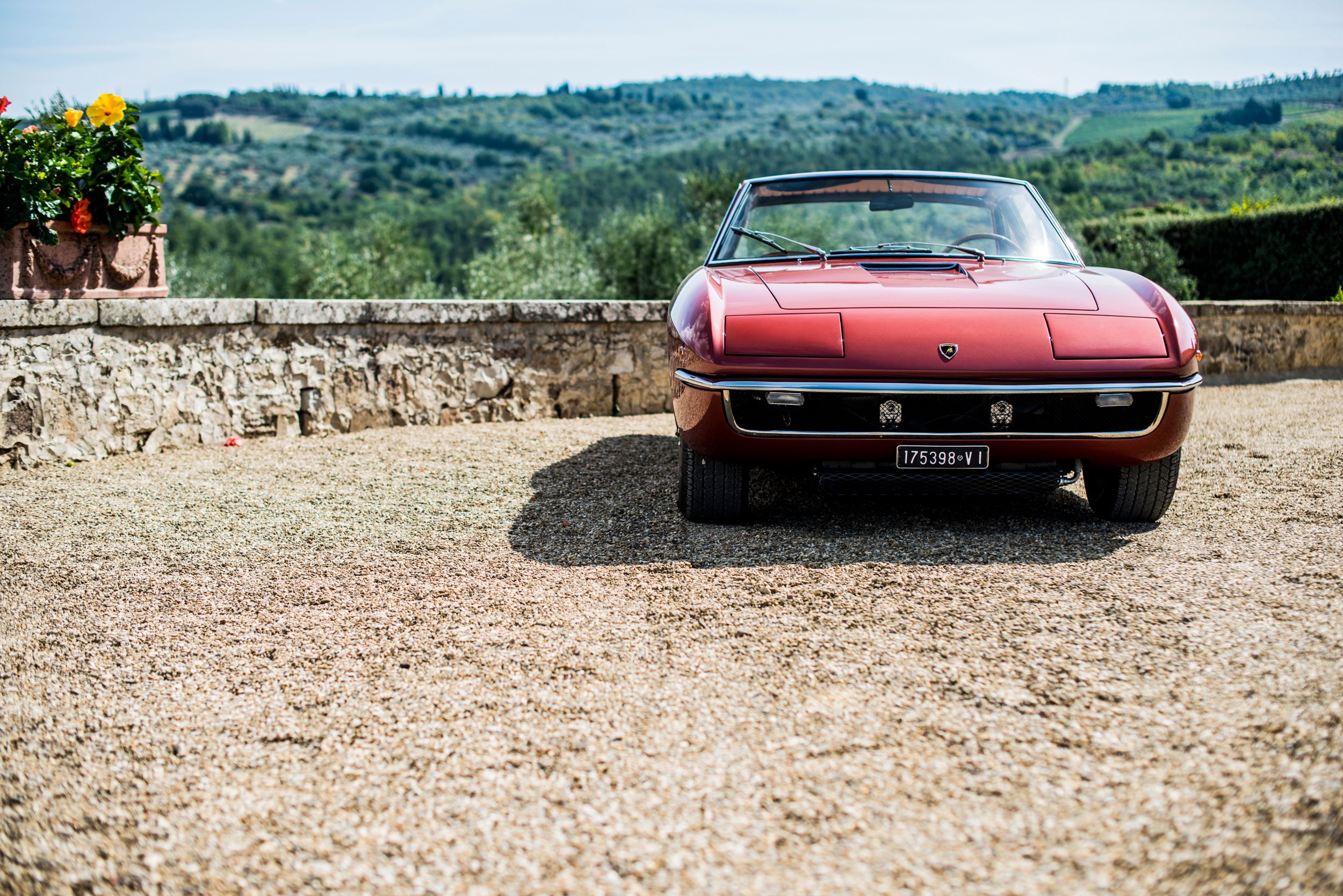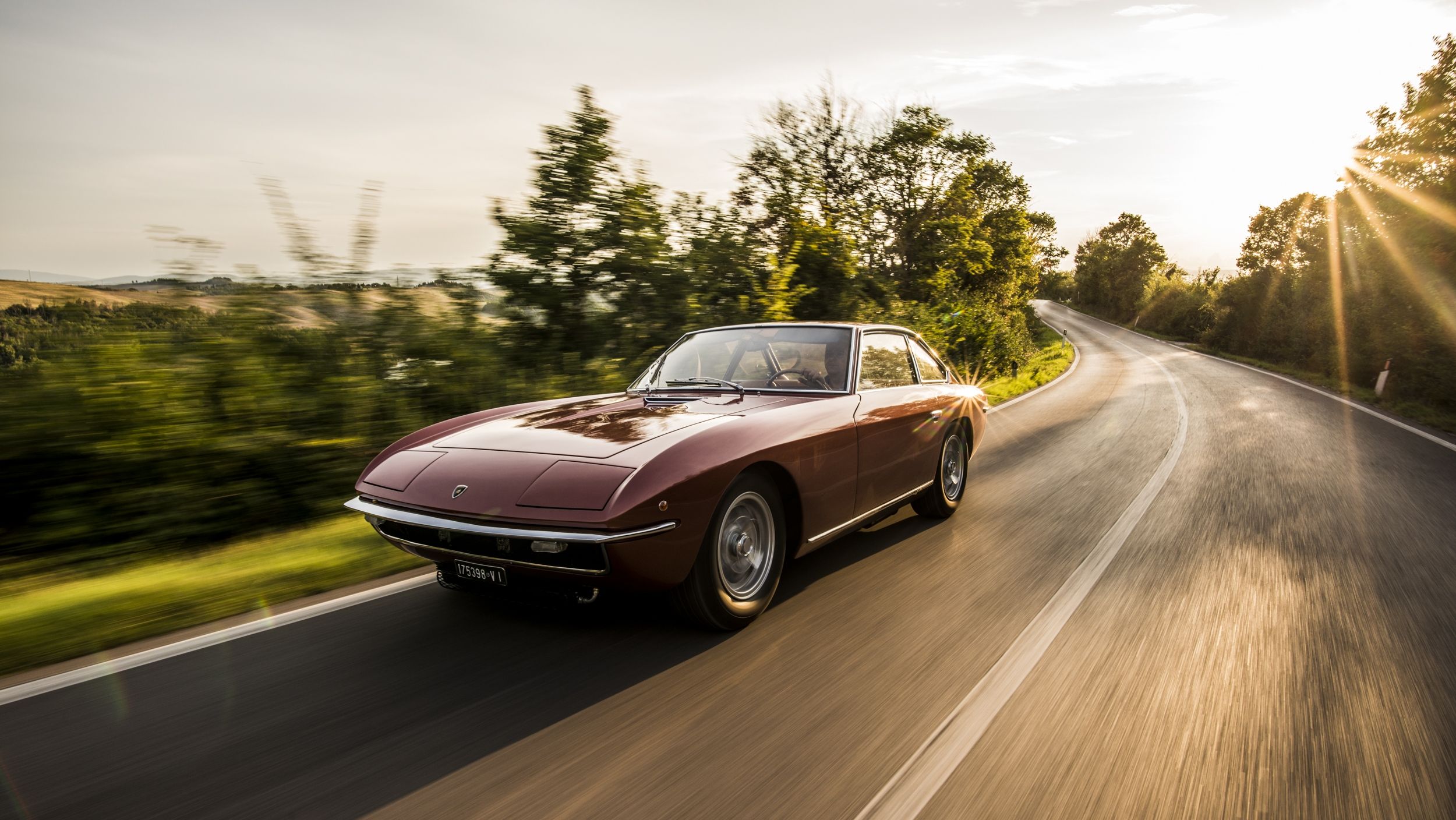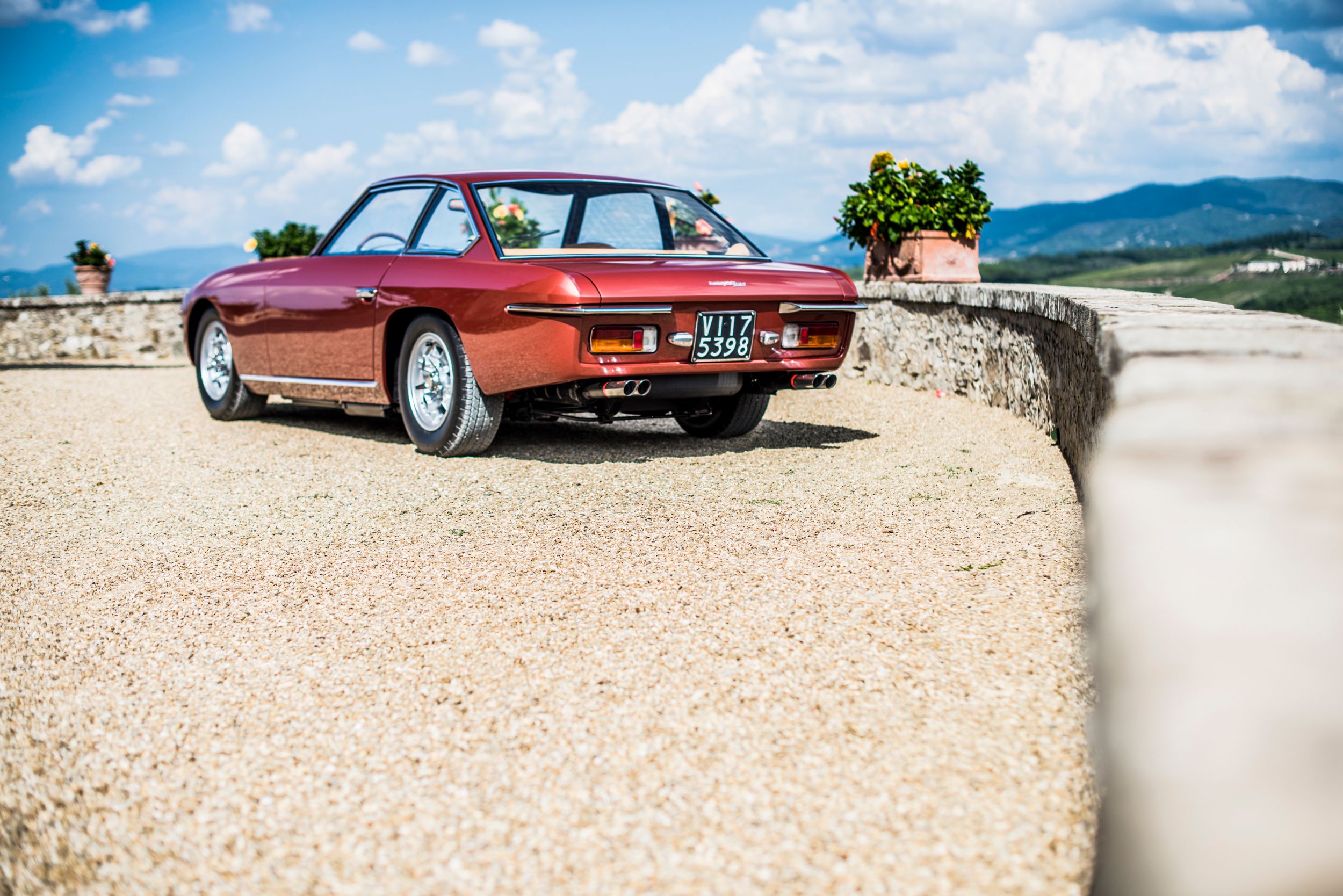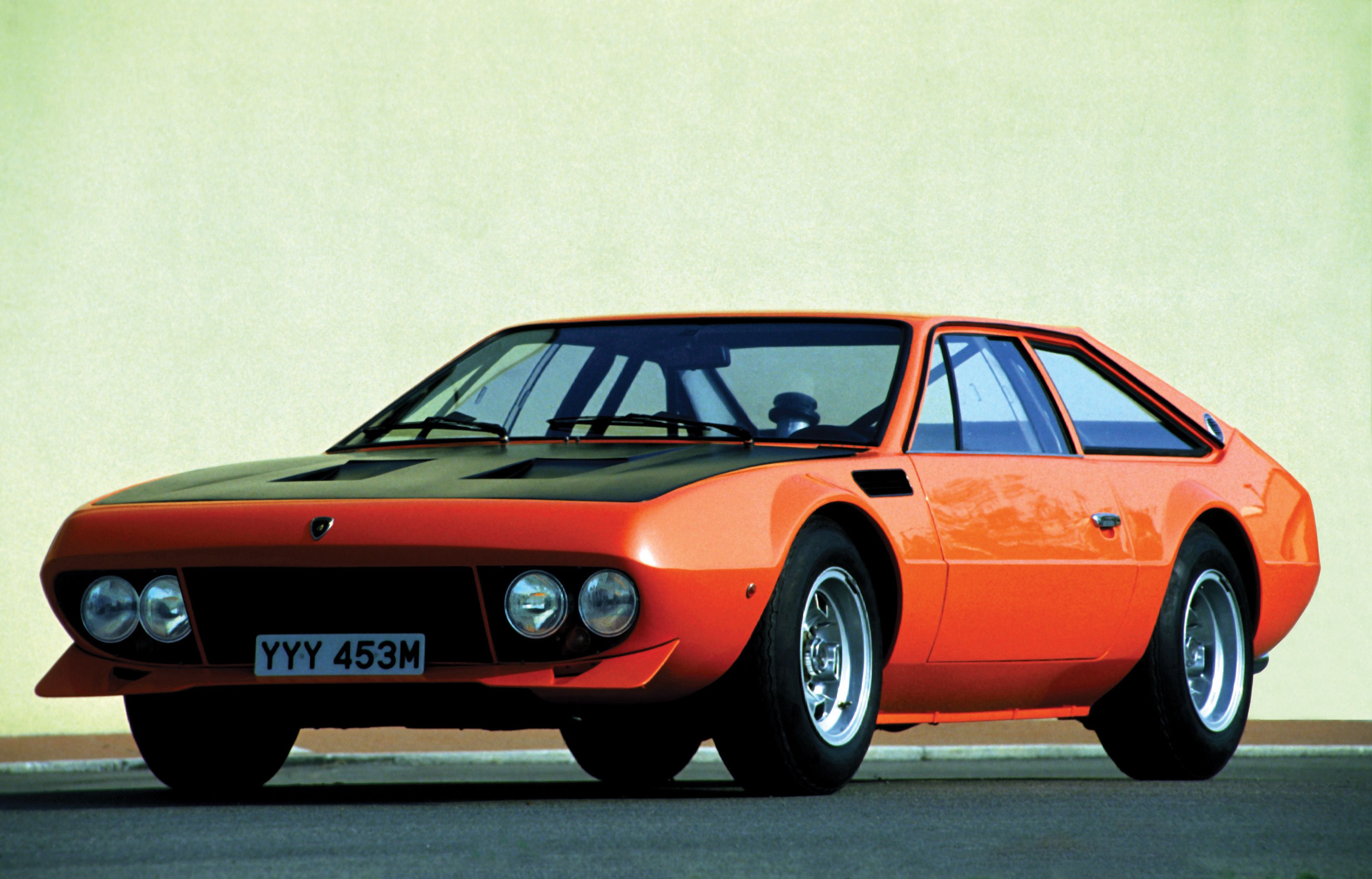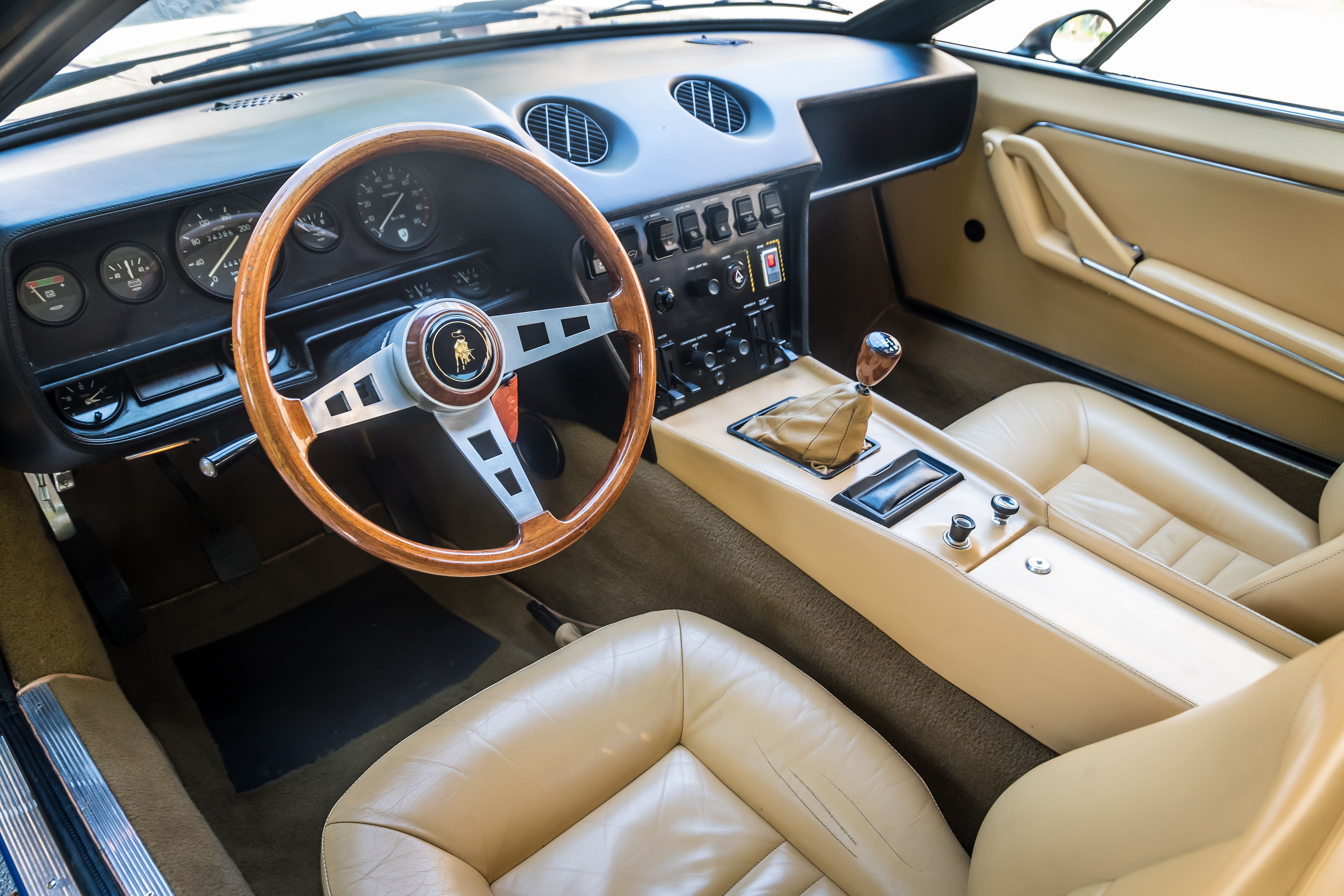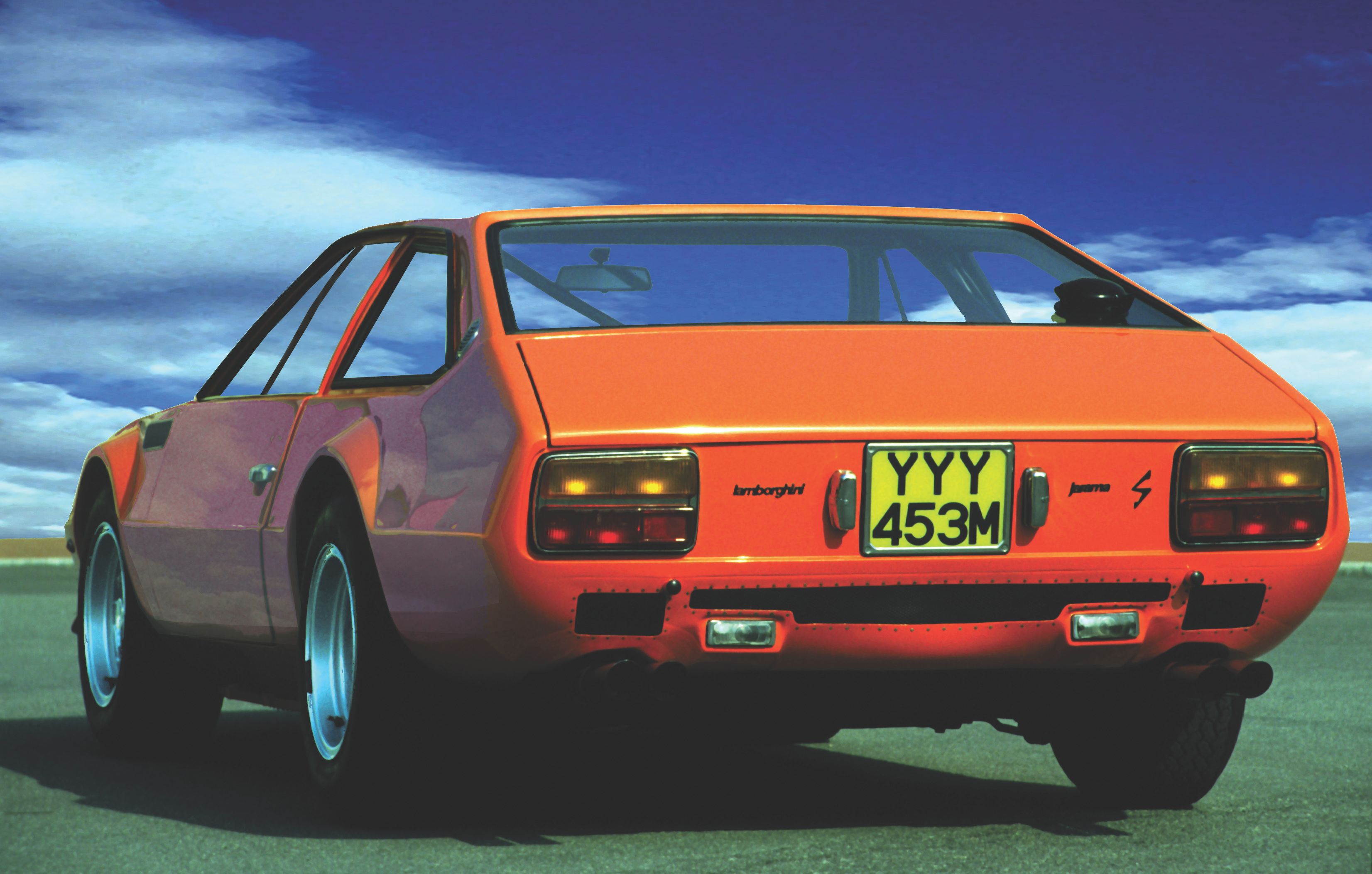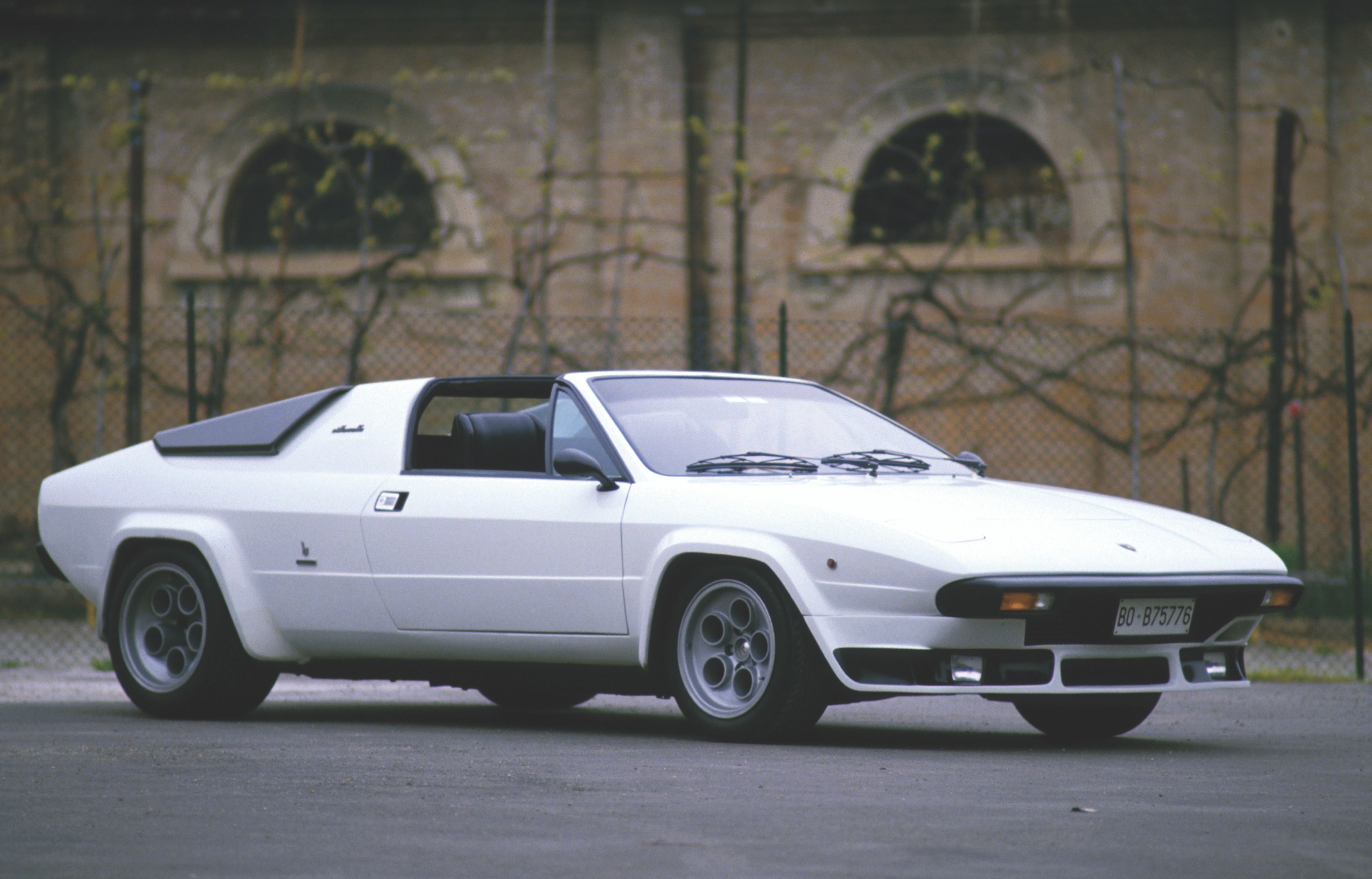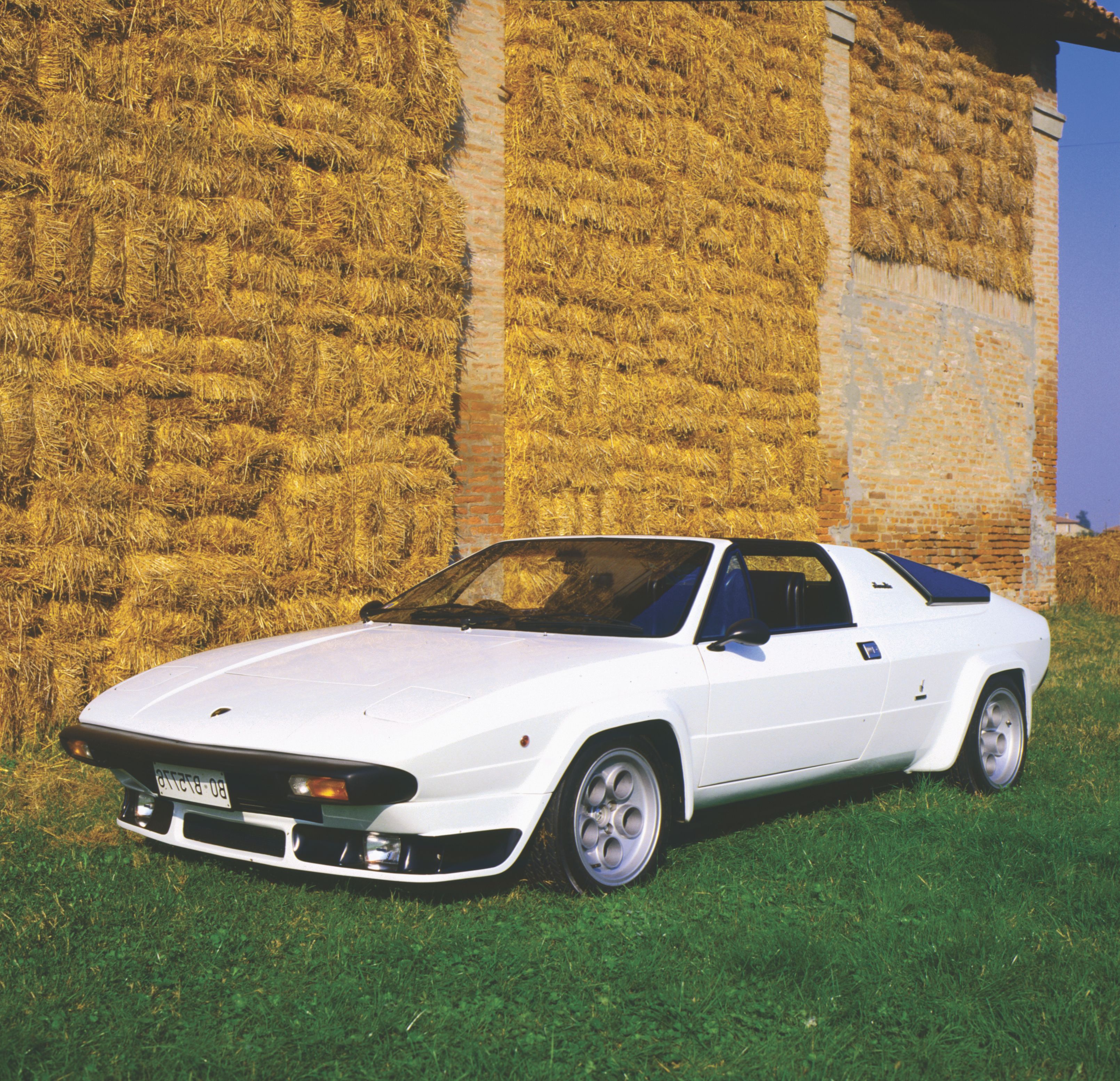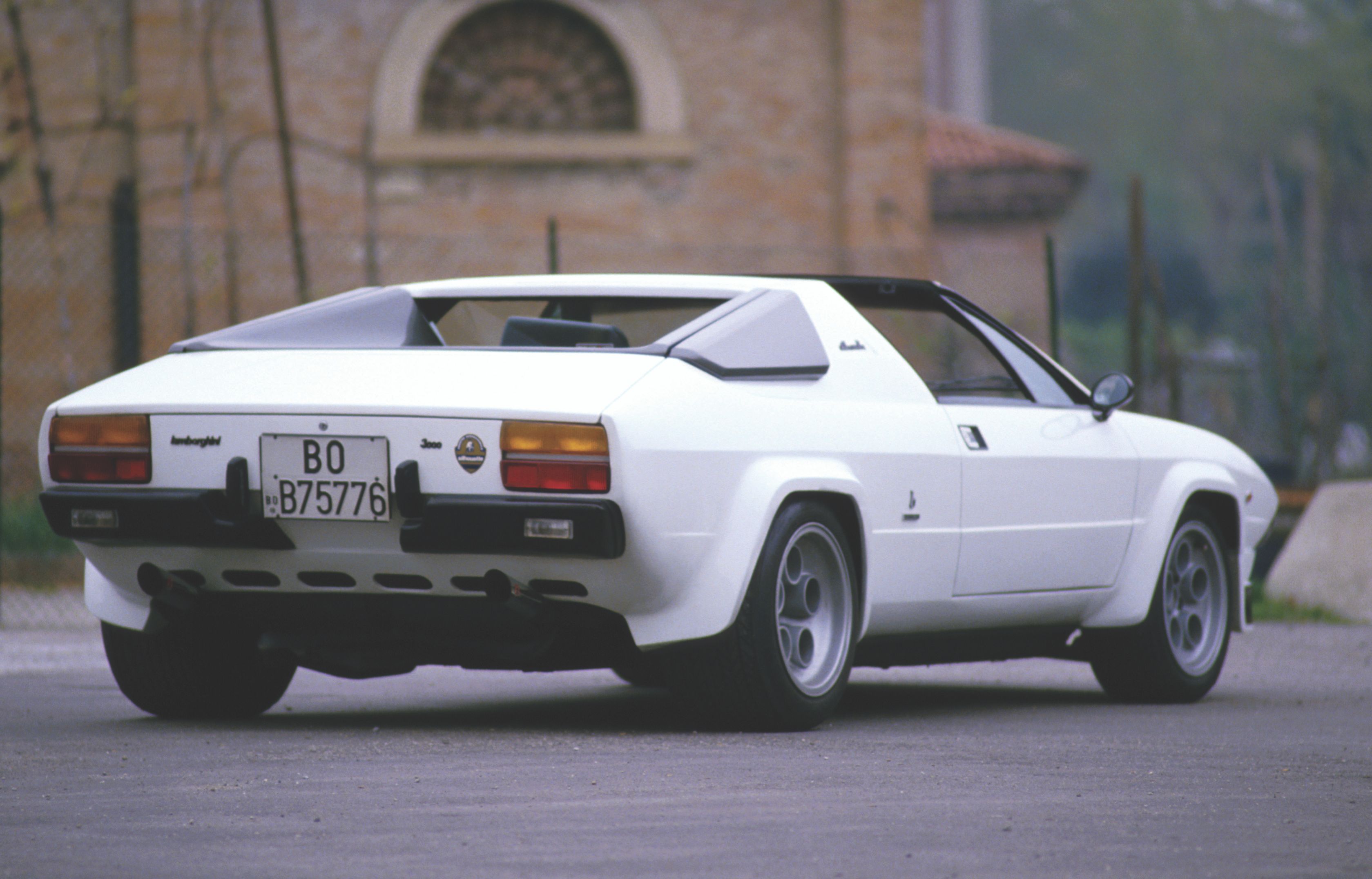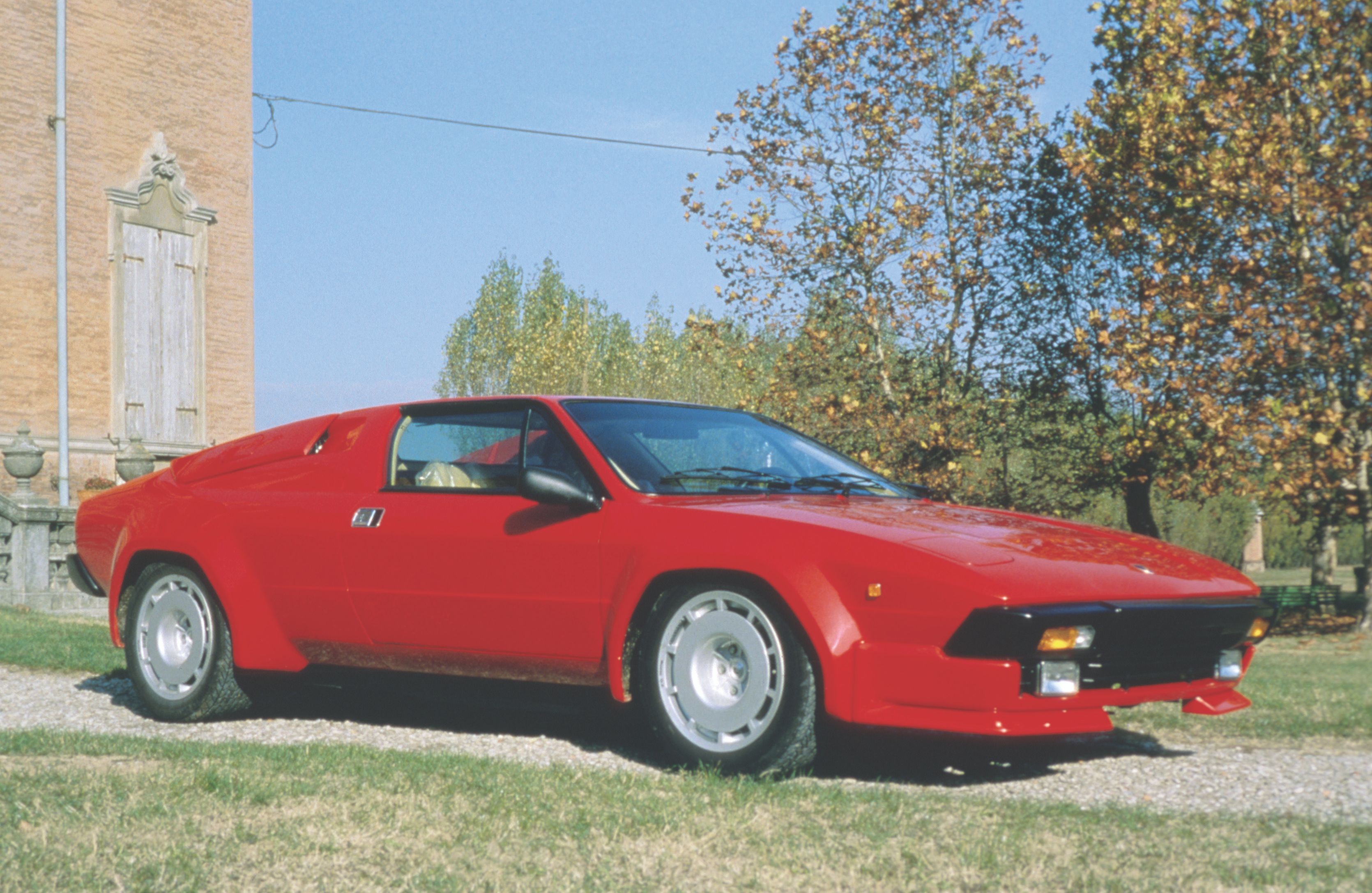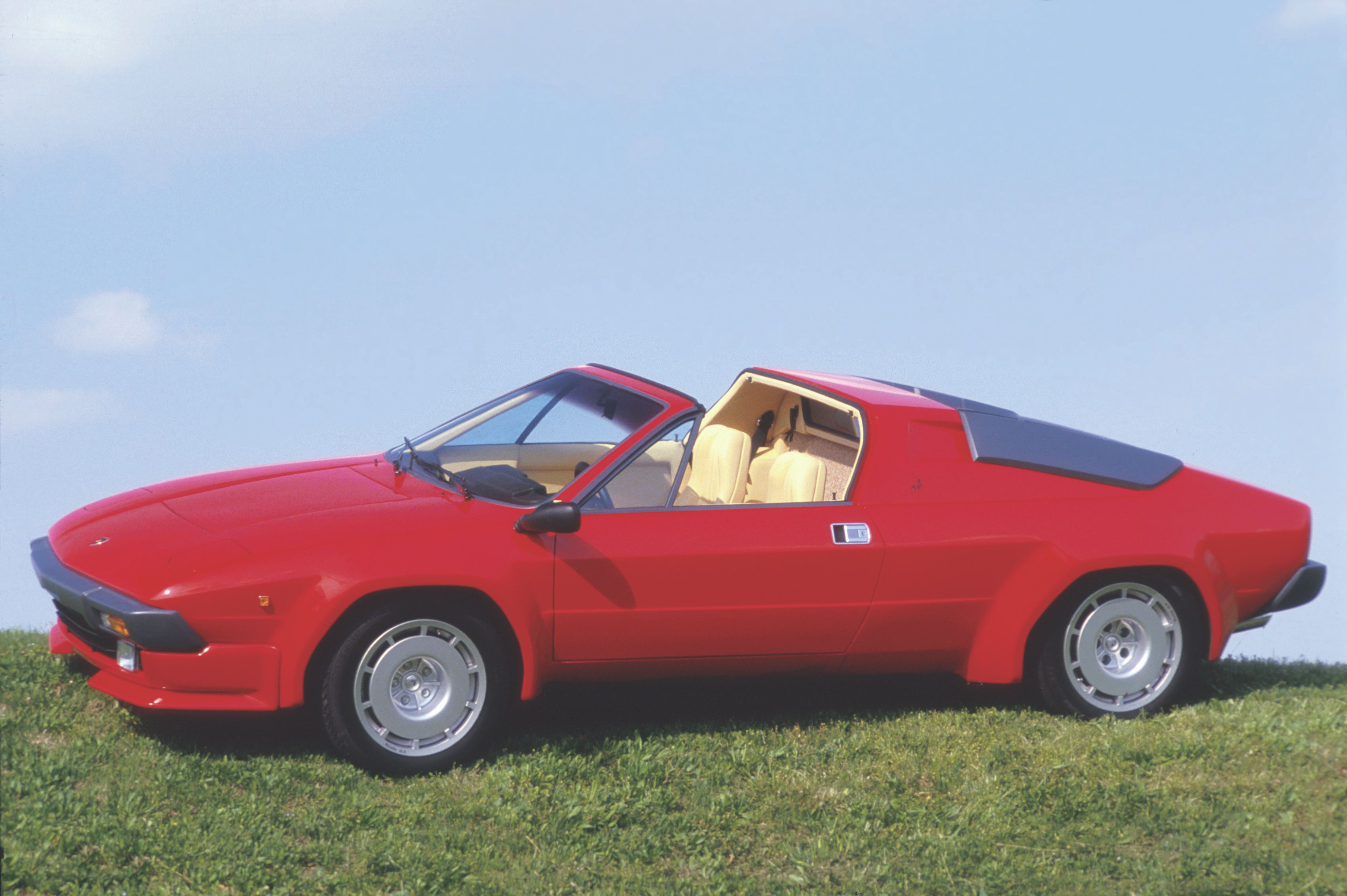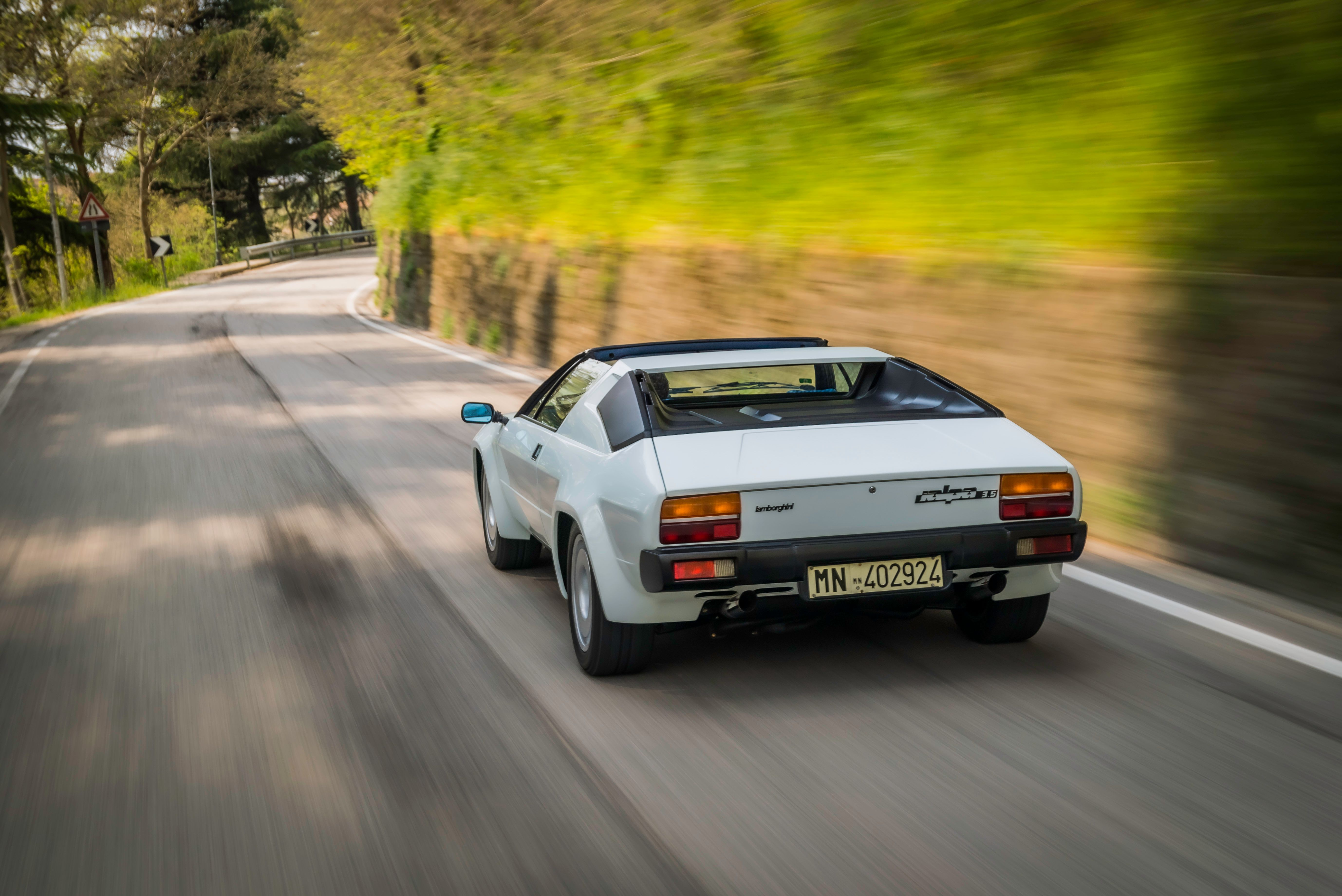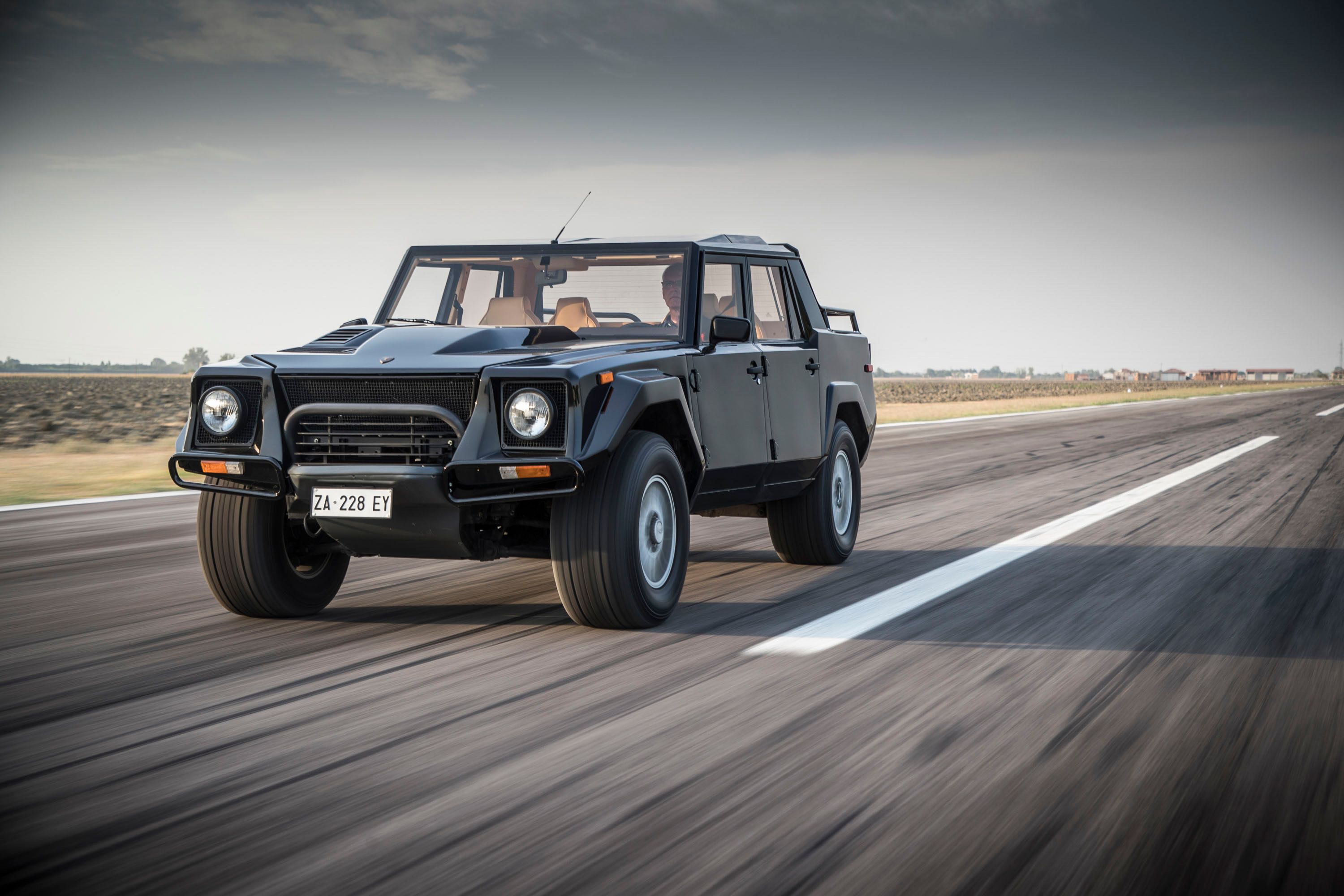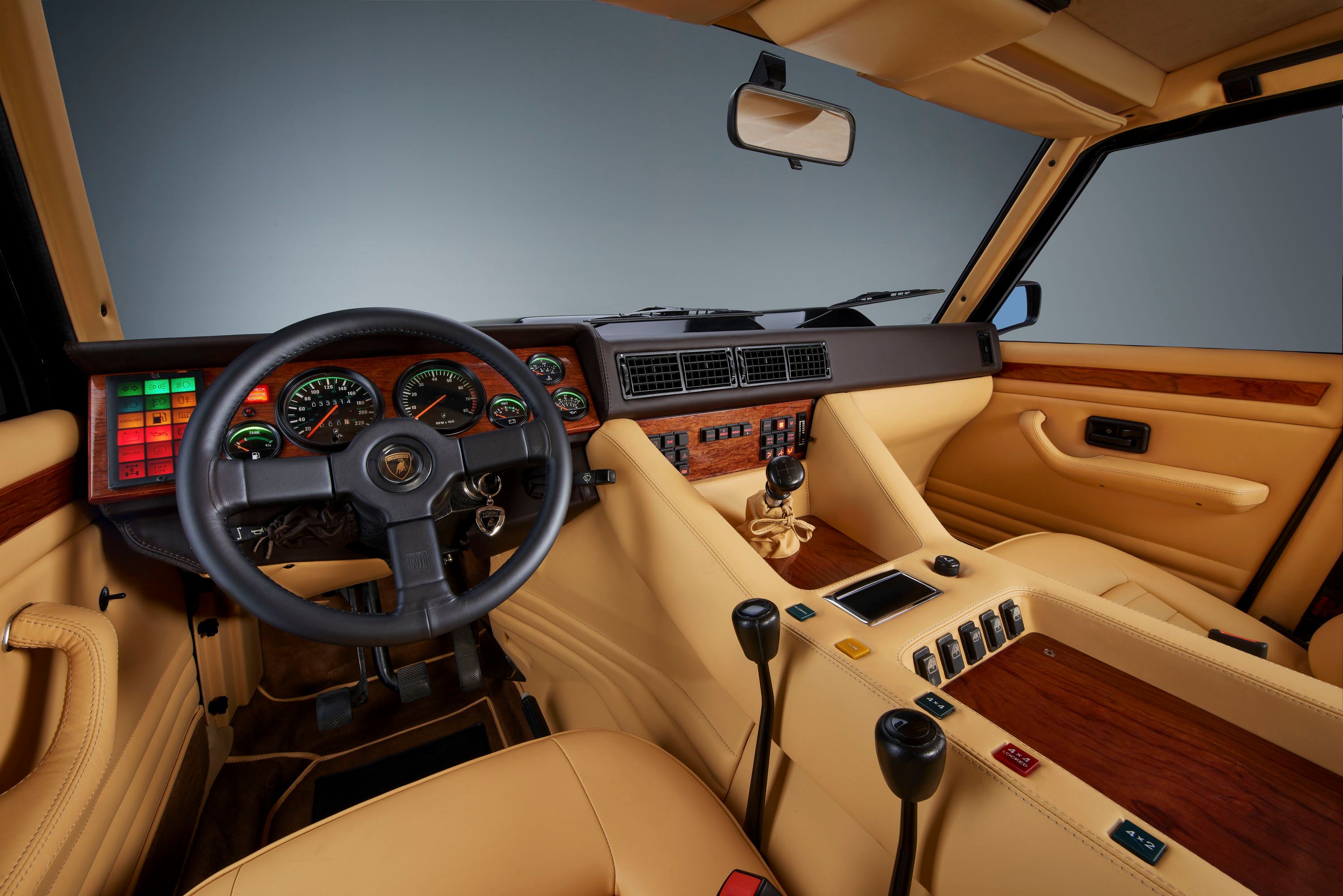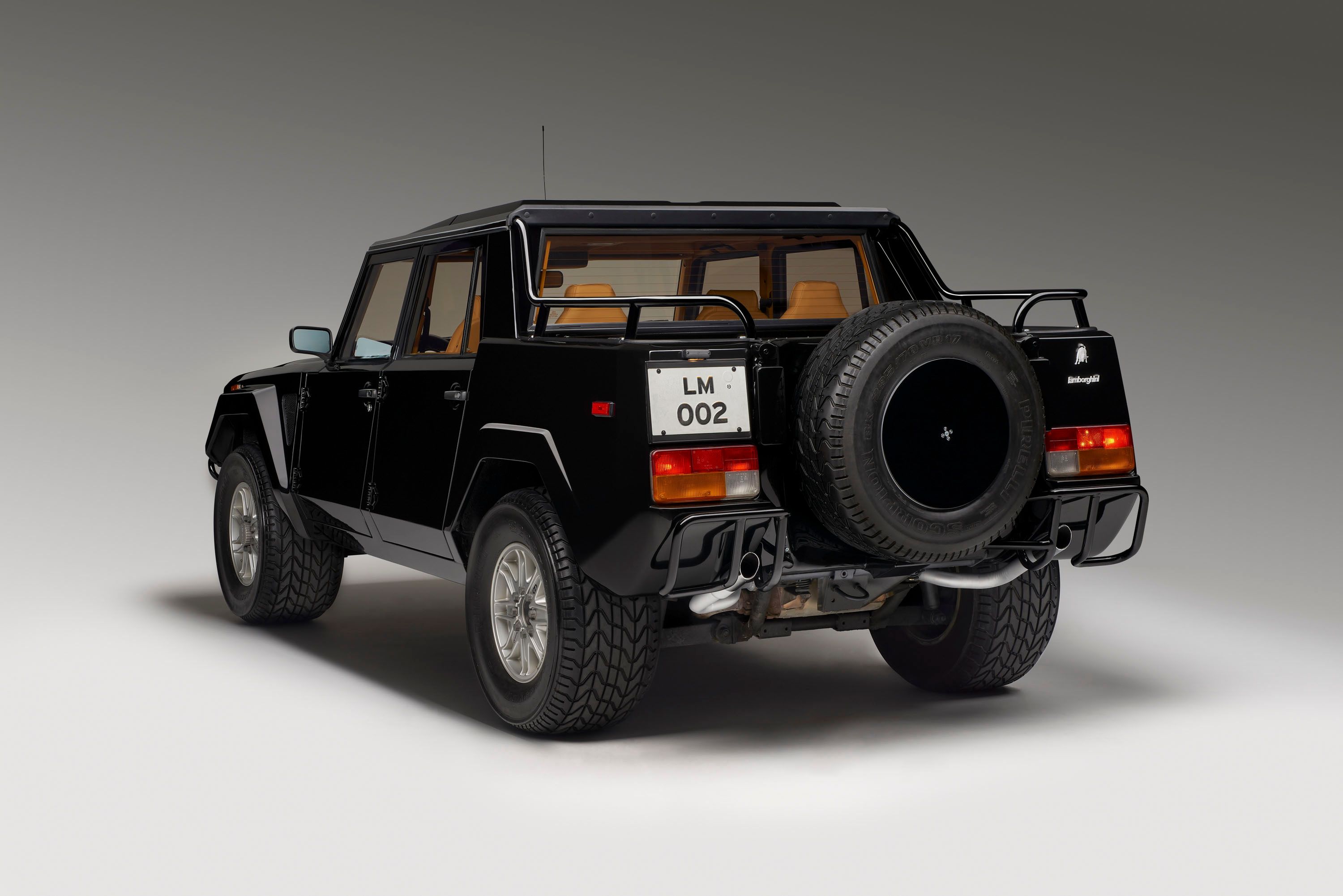Old Lambos bring with them a sense of occasion that none of its contemporary counterparts could manage back in the day, especially the cars flagged off under the reign of Ferruccio Lamborghini himself. Over the years, there have been plenty of limited runs and one-off Lamborghinis from the Diablo VT 6.0 SE to the Sesto Elemento and Sian, but in this article, we will take a look at some of the rarest and relatively unknown series production Lamborghini's made in the 20th century.
Lamborghini Islero
225 units produced between 1968 and 1969
One of the rarest and final iterations of Lamborghini's first car ever, the 350 GT. The Lesser-known Lamborghini Islero is one of the rarest 2+2 GTs from Lamborghini's stable. The car was the final iteration of the 350 GT line-up that kick-started Automobili Lamborghini's business back in 1963 and it was designated to fill in for the 400 GT, alongside the Espada which had a radical new design but shared the 2+2 seating layout and the same V12 displacing nearly four liters with the Iselero. But unlike the Espada, Iselero shared its design and even its frame and suspension with its predecessor, the 400 GT. The body of the car was shaped in aluminum by Marazzi, lending it a restrained and minimalist aura, a rather unconventional trait for a Lamborghini at the time. Though the engine was a carry-over, it was still a tried and tested masterpiece making 320-horsepower thanks to six Webber 40 DCOE carburetors. This setup came mated to a 5-speed synchromesh manual transmission. The ride quality was also a notch above most of its competitors' thanks to fully-independent double-wishbone suspension and disc brakes on all four corners.
But sharing the spotlight with the radical Espada and the Miura, the car that had just recently coined the term "supercar", the Islero tragically faded away in the background and felt dated in comparison which lead to disastrous sales figures. Production ceased after 225 models, of which 100 units made in the latter half were the improved GTS spec with power bumped to 340 horsepower and a few more noteworthy additions including bigger brakes, bigger carbs, and a more plush interior. Regardless, the design has aged remarkably and as a result, prices for some examples have been hovering around the $500,000 mark.
Lamborghini Islero specifications
|
Engine |
DOHC, naturally-aspirated, 60-degree, 24-valve, 4.0-liter V-12 engine with an aluminum block |
|---|---|
|
Compression ratio |
10.5:1 |
|
Fuel feed |
Electric Bendix fuel pump, 6 twin-barrel Weber 40 DCOE 20 carburetors |
|
Output |
320 horsepower at 7,000 rpm |
|
Torque |
276.6 pound-feet of torque at 4,500 rpm |
|
Top speed |
155-160 mph |
|
0 to 60 mph |
7 seconds |
|
Gearbox |
Lamborghini 5-speed manual, all-snychromesh |
|
Suspension |
All-independent with double wishbones front and rear, coil springs, Armstrong shock absorbers, and anti-roll bars |
|
Steering |
ZF worm and roller |
|
Brakes |
Girling disc brakes all around with twin Girling vacuum servos |
|
Weight |
2,734 pounds |
Read our full review on the Lamborghini Islero
Lamborghini Jarama
378 units produced between 1972 and 1976
Named after the Jarama river in Spain, famous for breeding fighting bulls, this V12 Lamborghini is perhaps one of the rarest standard production V12 Lamborghinis in history. This V12 powered 2+2 GT was unveiled at the Geneva Motor Show in 1970, designed as a replacement to the Islero but weirdly enough it was sold alongside the Espada, another quirky-looking 2+2 V12 grand tourer. On the subject of looks, there's no denying that the Jarama is a quirky-looking thing which opened it up to a lot of ridicule and this was one of the reasons for the low sales figures.
The Jarama, despite its odd looks, was no slouch. Sporting a 3.9-liter Lamborghini V12 engine mounted upfront with double-body Weber carburetors and dual overhead camshafts, mated to a 5-speed manual or a 3-speed TorqueFlight automatic, the Jarama GT was undeniably one of the fastest cars back in the day courtesy of the 350 horsepower on tap that helped it achieve a top speed of 260 km/h.
The interior, in typical Lamborghini fashion, was an ergonomic disaster but it was without a doubt, one comfortable GT car. Apart from a slightly tight footwell, the Jarama was widely regarded as one of the most comfortable Grand Tourers of the time and as a result, Lamborghini made an even more comfortable version, the Jarama GTS in 1972. Regardless, the financial difficulties faced by the automaker meant that the less successful of the two Grand Tourers in the company's line-up had to go and in 1976, the Jarama was discontinued after a brief 6-year production run wherein Lamborghini only sold 378 units, out of which 176 units were the early GT models and the rest were the improved GTS models. The Jarama continues to be the underdog of the classic Lamborghini scene and despite its rarity, these can be had now for around $200,000.
Lamborghini Jarama specifications
|
Engine |
V-12, 60-degree, 24-valve, chain-driven, DOHC, with an aluminum block and 7 main bearings |
|---|---|
|
Output |
352 horsepower at 7,500 rpm and 290.6 pound-feet of torque at 5,500 rpm on the GT 400, and 366 horsepower at 7,500 rpm and 298.7 pound-feet of torque at 5,500 rpm on the GTS 400 |
|
Compression ratio |
10.7:1 |
|
Fuel feed |
Six twin-barrel Weber 40 DCOE 20-21 carburetors with an Electic Bendix fuel pump |
|
Suspension |
All-independent, consisting of double transverse wishbones with coil springs, telescopic Koni dampers and anti-roll bars |
|
Transmission |
Five-speed all-synchromesh on the 400 GT while a Chrysler Torqueflit automatic became available in 1974 for the 400 GTS |
|
Steering |
ZM worm & roller |
|
Brakes |
Girling ventilated disc brakes on all wheels operated by two vacuum servo units with independent circuits to front and rear |
|
Performance |
Top speed: between 155 mph and 162 mph, 0-62 mph in 7 seconds |
|
Weight |
3,200 pounds |
Read our full review on the Lamborghini Jarama
Lamborghini Silhouette
53 units produced between 1976 and 1979
The Lamborghini Silhouette was the Italian auto marque's first Targa. Created by Bertone as an evolution of Uracco's striking design, the Silhouette is unmistakably 70's in its appearance and ethos. This particular car aimed to recreate the Urraco's success and the new topless design was intended to generate interest and attract a whole new demographic of enthusiasts.
When the car was unveiled at the Geneva Auto Show in 1976, the reception was pretty positive. This new baby Lambo was powered by a more powerful version of the Urraco P300's 3.0-liter V8 and made 266 horsepower and 201 lb-ft of torque although most Lamborghini experts reckon that the power figures varied from car to car.
It was also a step up in quality and ergonomics compared to its predecessor and got optional leather bucket seats instead of the Urraco's plastic ones and more cabin space thanks to the open-top design. It even received bigger wheels at 14 and 15 inches respectively and some of the lowest profile tires fitted to any production car at the time courtesy of their friends at Pirelli.
Though Lamborghini's idea was noble, the timing couldn't have been much worse. This car's predecessor, the Uracco was launched just as the fuel crisis hit the European coasts and the Italian workforces were plagued by union strikes. By the time the Silhouette was launched, the struggling economy had taken its toll on Lamborghini and the company's crumbling finances meant instead of manufacturing thousands as intended, Lamborghini had to hastily put a halt on Silhouette's production after producing just 53 examples, two of which were prototypes.
Lamborghini Silhouette Specifications
|
Engine |
V-8, 90-degree, DOHC, chain-driven, light-alloy and aluminum block, naturally-aspirated 3.0-liter |
|---|---|
|
Output |
266 horsepower at 7,500 rpm |
|
Torque |
201 pound-feet of torque at 5,750 rpm |
|
Compression ratio |
10.1:1 |
|
Fuel feed |
Four twin-barrel down-draught Weber 40 DCNF carburetors with an electric Bendix fuel pump |
|
Suspension Front |
MacPherson struts, lower A-arms, compliance struts, coil springs over tube shocks, anti-roll bar Rear: Chapman struts, reversed lower A-arms, trailing arms, coil springs over tube shocks, anti-roll bar |
|
Steering |
Rack & pinion |
|
Brakes |
All-wheel ventilated Girling disc brakes with double assistance |
|
Weight |
2,734 pounds |
|
Top Speed |
260 km/h (161 mph) |
Read our full review on the Lamborghini Silhouette
Lamborghini Jalpa
410 units produced between 1981 and 1988.
Named after a famous breed of fighting bulls, the Lamborghini Jalpa was just as striking but less ferocious than the bigger bulls from the Lamborghini stable. Aimed squarely at the Ferrari 308 that was had already secured its place as a pop culture icon, the Jalpa was the last of the V8-powered Lambos and shared the basic engine with the Urraco, albeit with minor revisions. For those of you not familiar with Lamborghini literature, the Urraco was the first V8-powered Lamborghini, designed to compete with the highly successful mid-engined V8 Ferraris of the day. The car that ended up being the inspiration for the Jalpa, however, was the Silhouette and that was mostly due to the company's tight finances. As a result, they were forced to carry over most of the hardware from that car and even the Bertone design was an extension of the Silhouette.
Lamborghini showcased the Jalpa prototype as an entry-level offering in the company's lineup, priced at around $25,000, shortly after Ferruccio Lamborghini had sold his stake in the company. The 3.0-liter V8 was a bored-out version of the engine used in the Urraco P300 and Silhouette which now displaced 3485 cc. The power figures stood at 255 bhp and 225 lb-ft of torque, which helped this baby Lambo achieve a 0-60 mph time of just 6-seconds and if you were brave enough, the Jalpa would top out at 145 mph.
Though the specs looked promising, the car itself was an ergonomic disaster and a classic case of shoddy Italian built quality, add to that the company's financial difficulties and the sub-par manufacturing capabilities and you have all the ingredients for an unmitigated disaster. Between 1981 and 1988, only 410 units were sold which was less than the V12 powered Lamborghinis of the time. With the new management in place, the V8 Lamborghini was laid to rest in 1988 with the Jalpa marking the end of the V8 Lamborghini up until the launch of the Urus SUV in 2017.
Read our full review on the Lamborghini Jalpa
Lamborghini LM002
328-units produced between 1986 and1993
The LM002's story starts with the Lamborghini Cheetah from 1977. The idea of a supercar manufacturer making a military spec SUV might not sound outlandish today, but before the Porsche Cayenne showed up in the early 2000s, the idea was considered completely bizarre. The Cheetah was Lamborghini's attempt at securing a big military contract from the United States that could save the company from financial hardships. But the design was flawed from the very beginning courtesy of the rear-mounted Chrysler V8 with 190 hp, a three-speed automatic transmission, and run-flat tires, which wrecked the vehicle's weight distribution and made it pretty much undrivable in combat situations.
Since the US military had little to no interest in getting military vehicles from a foreign vendor, the plan was scrapped. And this stunt had cost Lamborghini the money that they didn't have in the first place, leaving them in deep financial turmoil. At the time Lamborghini was also developing the M1 sportscar for BMW which they couldn't complete due to their weak finances. After the Mimran family took over the company, the improved LM001 was displayed at the 81 Geneva Motor Show with a similar design but with an AMC V8 instead of the Chrysler unit.
Five years later though they introduced the completely reimagined LM002 prototype, powered by the Countach LP500's 5.2-liter V12 mated to a 5-speed manual transmission, and this time around they put the engine up front which solved everything. With 444 horsepower and 369 lb-ft of torque on tap, the LM002 could achieve a top speed of 118 mph, making it one of the fastest SUVs of its time, but the old fashioned V12 and four-wheel drive on a vehicle weighing nearly three tonnes meant that on a good day, the LM002 would do 10 miles to the gallon, but Lamborghini did fit the SUV with an equally Ludacris 169-liter fuel tank to combat this issue. In case the 5.2-L V12 didn't have enough oomph for customer needs, they could always fit it with the optional 7.2-liter marine V12. The Rambo-Lambo was a rare beast indeed, with only 328-units produced between 1986 and 1993. This exclusivity was accompanied by an exorbitant price of $120,000. Too much according to some for an SUV that was not much more than a bare-bones military vehicle with a V12 and leather seats. But those 300 odd people who do own them are now sitting on the gold mine with values for a decent example hovering around the $250,000 mark.
Read our full review on the Lamborghini LM002

